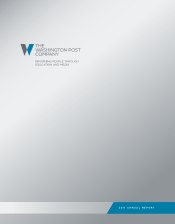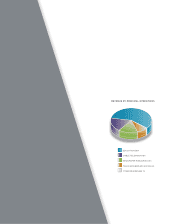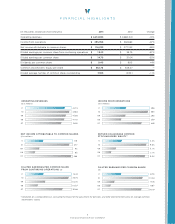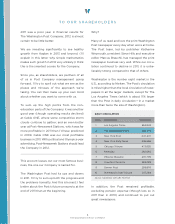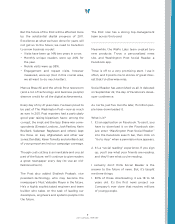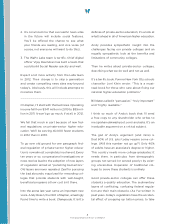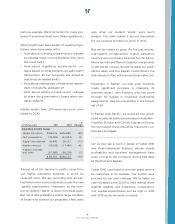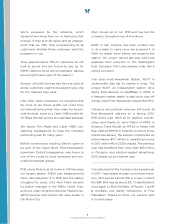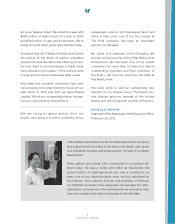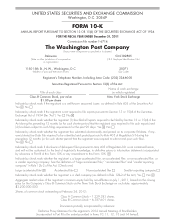Washington Post 2011 Annual Report Download - page 6
Download and view the complete annual report
Please find page 6 of the 2011 Washington Post annual report below. You can navigate through the pages in the report by either clicking on the pages listed below, or by using the keyword search tool below to find specific information within the annual report.
4
THE WASHINGTON POST COMPANY
2. It’s convinced me that successful news sites
in the future will include social features.
You’ll be oered the chance to see what
your friends are reading, and vice versa (of
course, not everyone will want to do this).
3. The WaPo Labs team is terrific. Chief digital
ocerVijayRavindranhasbuiltateamthat
could build Social Reader quickly and well.
Expect a lot more activity from the Labs team
in 2012. Their charge is to skip a generation
and create compelling news sites way beyond
today’s. Obviously, this will include attempts to
monetize them.
On Kaplan, I’ll start with the bad news. Operating
income fell from $347 million in 2010 to $89 mil-
lion in 2011. It won’t go up much, if at all, in 2012.
We fell that much in part because of new fed-
eral regulations on private-sector higher edu-
cation. We’ll be serving 40,000 fewer students
in 2012 than in 2010.
To go over old ground for one paragraph: fed-
eral regulation of private-sector higher educa-
tion is now almost completely incoherent. Every
ten years or so, congressional investigations or
news stories lead to the adoption of new layers
of regulation aimed at “punishing bad actors.”
Old layers are never repealed. Zeal for pursuing
the bad abounds; equal zeal for rewarding col-
leges that provide students with well-taught,
beneficial programs at low cost isn’t there.
Into the arena last year came an important new
voice. Andy Rosen, the CEO of Kaplan, amazingly
found time to write a book: Change.edu. It isn’t a
defense of private-sector education; it’s a look at
what’s ahead in all of American higher education.
Andy provides sympathetic insight into the
challenges facing our private colleges and an
equally sympathetic look at the benefits and
limitations of community colleges.
Then he writes about private-sector colleges,
describing what we do well and not as well.
It’s a terrific book. Former New York City schools
chancellor Joel Klein wrote: “This is a must-
read book for those who care about fixing our
national higher-education problems.”
Bill Gates called it “persuasive,” “truly important”
and “highly readable.”
I think so much of Andy’s book that I’ll send
a free copy to any shareholder who writes to
me (grahamd@washpost.com) and asks. It’s an
invaluable argument on a critical subject.
The gist of Andy’s argument (and mine) is
that 60% of U.S. jobs today require some col-
lege. (Will this number not go up?) Only 40%
of adults have an associate’s degree or higher.
This country needs more college graduates; it
needs them, in particular, from demographic
groups not served (or served poorly) by exist-
ing universities. Expansion of traditional col-
leges to serve these students is unlikely.
Good private-sector colleges can oer these
students a quality education. The sedimentary
layers of conflicting, confusing federal regula-
tion are their main obstacle. (As I’ve written in
past years, today’s regulations have the acciden-
tal eect of propping up tuition prices, to take

